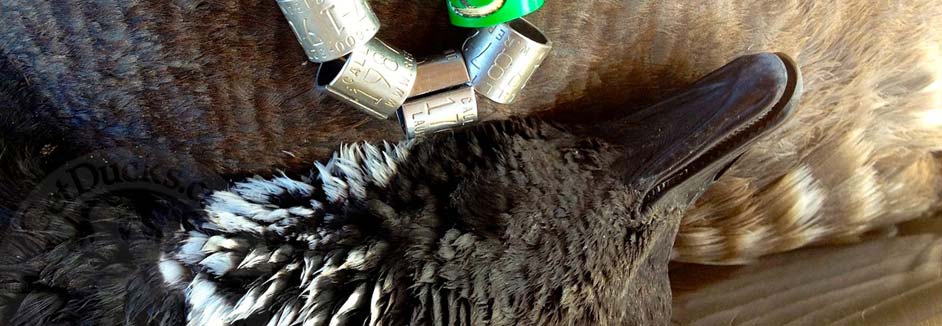Atlantic Brant
 Atlantic Brant (Branta bernicula hrota) is one of 2 North American brant subspecies. There are 3 subspecies worldwide. All brant subspecies breed in the high-Arctic tundra and overwinter in temperate-zone estuarine habitats. Atlantic Brant are the “pale-bellied” subspecies. Their small head and short neck are black. The white necklace on its neck is coarsely patterned, not nearly as distinctly defined as on its black brant cousin. Body plumage is dark brown-gray, contrasting markedly with significantly paler flanks and belly. Brant movements are usually tidal influence dependent. Loafing and feeding areas, and areas utilized for grit or drink water at low tides, are good places to hunt. Brant decoy readily. Especially for the savvy North American waterfowl species collector, they are a pleasure to hunt, and hunting brant on the Atlantic side can be easily combined for hunting other duck and goose species. New England, Delaware, Maryland and New Jersey are prime brant wintering ground hunting areas.
Atlantic Brant (Branta bernicula hrota) is one of 2 North American brant subspecies. There are 3 subspecies worldwide. All brant subspecies breed in the high-Arctic tundra and overwinter in temperate-zone estuarine habitats. Atlantic Brant are the “pale-bellied” subspecies. Their small head and short neck are black. The white necklace on its neck is coarsely patterned, not nearly as distinctly defined as on its black brant cousin. Body plumage is dark brown-gray, contrasting markedly with significantly paler flanks and belly. Brant movements are usually tidal influence dependent. Loafing and feeding areas, and areas utilized for grit or drink water at low tides, are good places to hunt. Brant decoy readily. Especially for the savvy North American waterfowl species collector, they are a pleasure to hunt, and hunting brant on the Atlantic side can be easily combined for hunting other duck and goose species. New England, Delaware, Maryland and New Jersey are prime brant wintering ground hunting areas.
Available Hunts
 Atlantic Brant mostly breed in northeastern Canada, wintering along the Atlantic Coast, from Maine to as far south, at times, as Georgia. They rarely stray from tidal estuaries where they feed on eelgrass, seaweed and sea lettuce.
Atlantic Brant mostly breed in northeastern Canada, wintering along the Atlantic Coast, from Maine to as far south, at times, as Georgia. They rarely stray from tidal estuaries where they feed on eelgrass, seaweed and sea lettuce.
On the US Atlantic Coast, a blight obliterated eelgrass in 1931. Increased urbanization-related sedimentation has done little to since improve. Atlantic Brant have adapted their foraging habitats to newer food sources, and are seen regularly feeding on ballfields and parks in urban settings. Many believe them to be undesirable table-fare for this reason.







